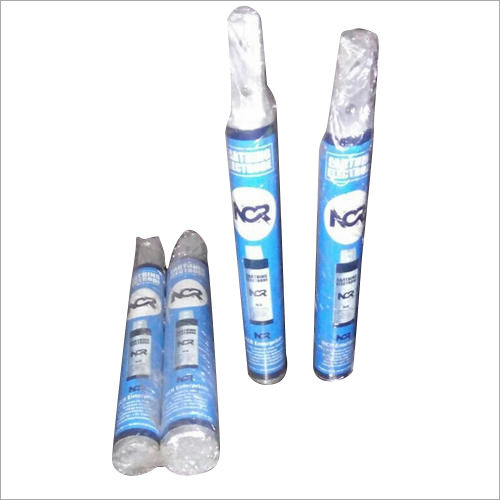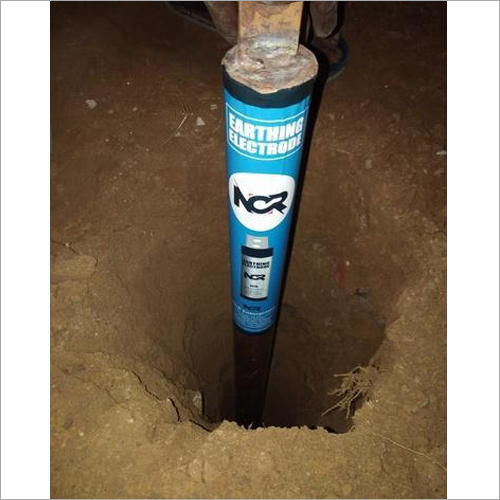
GI Earthing Electrode
1000 INR/Piece
Product Details:
- Diameter 38 to 114 Millimeter (mm)
- Product Type Earthing Electrode
- Material GI
- Application grounding electrical systems
- Function low impedance path for electrical current to flow into the ground
- Shape Round
- Color Silver
- Click to view more
X
Earthing Electrodes Price
- 20 Piece
- 1000 INR/Piece
Earthing Electrodes Specification
- grounding electrical systems
- Earthing Electrode
- GI
- 38 to 114 Millimeter (mm)
- low impedance path for electrical current to flow into the ground
- Silver
- Round
GI Earthing Electrode Trade Information
- 1000 Piece Per Day
- 1-2 Days
- Poly Pack
Product Description
We have a comprehensive yet wide assortment of GI Earthing Electrode. This electrode is developed especially for its application in safe earthing of areas and buildings. Manufactured in Mild steel pipe and it is hot dip galvanized, this is broadly demanded by our clients. Our customer can avail this GI Earthing Electrode as per their requirements at most competent prices.
An earthing system is an indispensable part of an electric power system. Earthing or grounding systems protects people from the electrical shock that may occur from an electrical circuit in a building. To create an earthing system, electrical equipment, namely, earthing electrode is required. Earthing electrodes are made of metallic materials used for attracting fault currents or lightning. The most commonly used electrode is GI Earthing Electrode. Normally designed as rods or pipes, the earthing electrodes are buried into the ground whereby the faulty currents are discharged safely without damaging electrical circuits or equipment, and causing harm to inhabitants in a house, building, or office.
Earthing electrodes also discharge lightning from the sky if it is directed toward a building. The electrode attracts the lightning and discharges the current safely toward the ground. In principle, the earthing electrodes must be penetrated into ground that contains moisture. It is penetrated inside the damp ground to reduce resistance. Thus, the earthing electrode provides a good conductive path to the faulty current and safe discharge to the ground.
Benefits of Earthing Electrodes:
Earthing electrodes have multiple benefits especially when it comes to the protection of man and material from electrical shocks or faulty equipment and appliances. Here are some notable benefits of earthing electrodes :
- Protection of human or animal lives from electrical shocks;
- Protection of homes, machinery, appliances, and equipment under faulty electrical conditions;
- Guard against power surges due to lightning nearby;
- Eliminates or reduces voltage fluctuations in buildings;
- Ensures steady voltage supply;
- Reduces electrical noise; and
- Provides safe passage to dispel short circuit currents and lightning.
Features of GI Earthing Electrodes
We manufacture outstanding quality GI Earthing Electrodes. GI or galvanized iron is achieved through galvanization of iron which is a process of coating the iron with zinc. Thus, galvanization of iron increases its corrosion resistance. There are other materials, such as stainless, which are more resistant than galvanized iron but they are not cheap and therefore, not the preferred choice for earthing electrodes. Some other features, for which our GI earthing electrodes are used, are:
- Suitability to all kinds of soil
- High dissipation rate of current
- Increased durability and reliability of purpose
- No requirement of pouring water
- Periodical moisturizing is not needed
- Applications of GI Earthing Electrode
- For a neutral earth system
- In the lightning protection system
- Complying with safety requirements for electrical substation
- In buildings for the safe dissipation of fault currents and lightning
- Protection of electronic and AC power systems, and central communication systems
Product Details of GI Earthing Electrode
| Material | Galvanized Iron (GI) |
| Brand | NCR |
| Color | Silver |
| Service Life | 10 Years |
| Terminal Size | 32 X 6 mm |
| Finishing Type | Smooth |
| Packaging Type | Poly |
| Capacity | 10 TO 35 KA |
| Diameter | 48-76 mm |
FAQs : Earthing Electrode
How to test earthing electrode resistance?
The resistance of the earthing electrode can be measured through different methods. The testing depends on the type of neutral system, installation type, and the likelihood of power supply termination. Four variables impact the resistance of an earthing system. These are:
- Soil composition
- Soil's moisture content
- Soil temperature
- The depth of the electrode
The resistance of earthing electrode is contingent on the soil's resistivity. Thus, it becomes imperative to measure the resistivity of the soil where the electrode is to be inserted. Several test methods are used to measure earthing electrode resistance. The tests are based on a site's fall of potential (FOP). Considering these factors, the following most commonly employed methods are used for measuring earthing electrode:
- Fall of Potential 61.8 percent test
- Fall of Potential - Test using a clamp on CT
- Fall of Potential - Slope test
In the FOP method, two auxiliary earth electrodes apart from the test electrode are placed at ideal distances from the test electrode. A controlled current is passed between the auxiliary current electrodes and the test electrode. Through this method, the potential difference between the auxiliary current electrode and the test electrode is measured.
Which electrode is used for earthing purposes?
Galvanized iron or GI electrode is most commonly used for the earthing system. The GI earthing electrodes boast high resistance to corrosion and a good current dissipation rate. It also doesn't require periodical moisturizing or pouring of water. Besides, GI earthing electrodes are cost-effective in comparison to others.
What are the types of earthing electrodes?
There mainly four types of earthing electrodes, namely:
- Pipe earthing
- Plate earthing
- Rod earthing
- Mat earthing
Out of these earthing electrode types, the pipe earthing electrode is the most commonly used as it is suitable for all types of soil.
What is the difference between GI Earthing Electrode and Earthing Electrode Rod?
GI earthing electrode is made of galvanized iron. This can be manufactured as pipes, rods, or plates while earthing electrode rod is manufactured in the shape of a solid rod with a pointed tip for smooth penetration into the earth's surface.
How do you manufacture an earthing electrode?
Earthing electrodes can be manufactured using different materials, such as copper, stainless steel, galvanized iron (GI), etc. The electrodes are manufactured as rods, plates, pipes, or mats. Depending on the type of earthing electrode, engineers adopt the manufacturing technique. For instance, GI earthing electrode is made by coating iron with a certain percentage of zinc. Likewise, a copper electrode is manufactured by molecularly bonding 99.9% pure electrolytic copper upon a low-carbon steel structure.
What is the function of an earthing electrode?
The main function of an earthing electrode is to create a safe space for human beings for protection from electrical shocks or to create a zero potential surface level around the area where electrical equipment is installed. Earthing electrodes work by preventing the occurrence of dangerous voltage and safe dissipation of fault currents through the earthing system.
Tell us about your requirement

Price:
Quantity
Select Unit
- 50
- 100
- 200
- 250
- 500
- 1000+
Additional detail
Mobile number
Email
Other Products in 'Earthing Electrode' category
We are accepting only bulk quantity orders.







